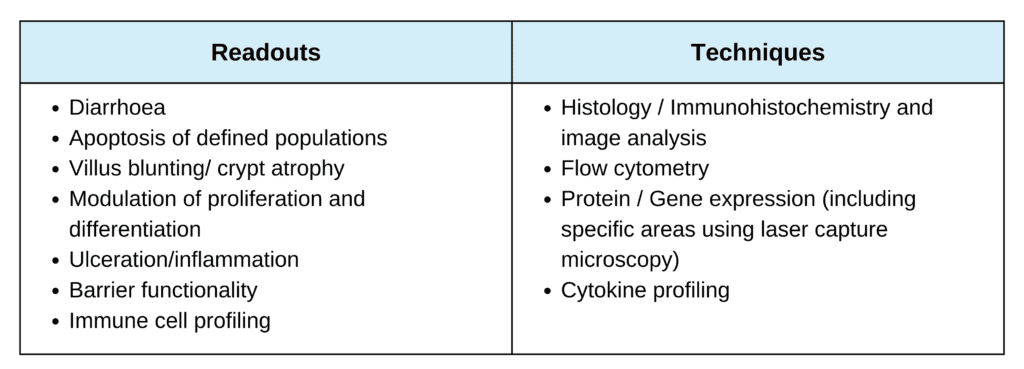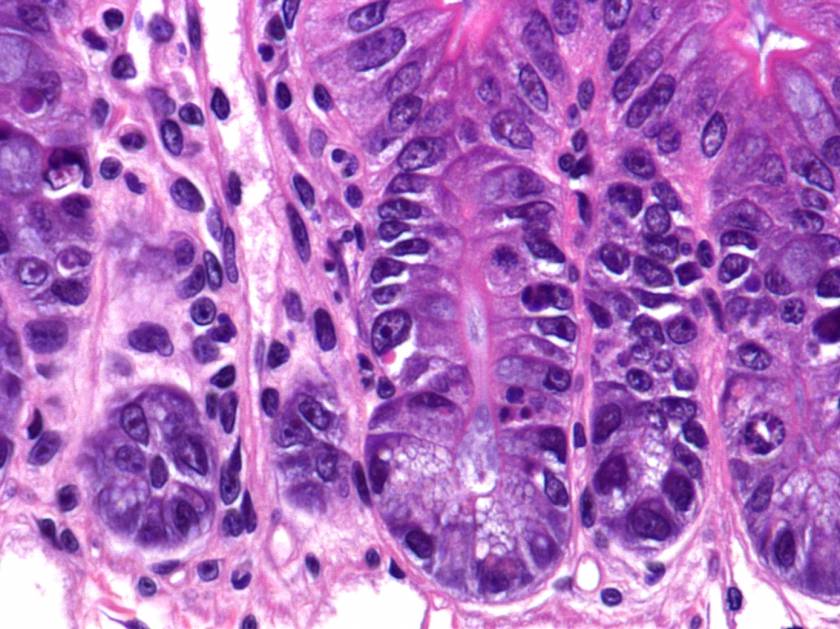Epistem’s Models for Assessing Gastrointestinal Toxicity
In vitro models derived from primary tissue (such as organoids or organoid derived monolayers) can be early screens for toxic potential, and also identify potential mechanisms such as changes in permeability.
In vivo models can uncover physiological and pathological changes, identify the target cell population and modified pathways. Since the GI epithelium is constantly being replaced the timings within such assays is crucial.


